Organization
Although the General Convention of the Episcopal Church was held in Richmond, Virginia in October of 1859, just before John Brown's raid on Harpers Ferry, Southern states did not begin to secede from the Union for another year. Beginning with the secession of South Carolina in December 1860, Southern dioceses struggled over the issue of their status in the Episcopal Church. The first diocese to separate was that of Louisiana, whose bishop Leonidas Polk issued a proclamation on January 30, 1861, stating, "The State of Louisiana having, by a formal ordinance, through her Delegates in Convention assembled, withdrawn herself from all further connection with the United States of America, and constituted herself a separate Sovereignty, has, by that act, removed our Diocese from within the pale of 'The Protestant Episcopal Church in the United States'". [2] Although other bishops disagreed with Polk's view that actions of civil authorities could automatically sever a diocese's relationship with the wider church, the Southern bishops agreed that a separation existed, even if a division might not. The southern bishops also maintained that this was a separation forced upon them by the changing political realities.
On March 23, 1861, Polk and Stephen Elliott of Georgia, the two most senior bishops, requested the Confederate dioceses send representatives to Montgomery, Alabama, for a meeting on July 3. All invited dioceses were represented except Texas. Virginia and North Carolina dioceses were not represented as their states had not seceded at the time the meeting was called. At this meeting, a committee was chosen to write a draft constitution and canons. This meeting ended with a resolution stating: "That the secession of the States ... from the United States, and the formation by them of a new government, called the Confederate States of America, renders it necessary and expedient that the Dioceses within those States should form among themselves an independent organization." [2]
From October 16–20, a convention was held at Trinity Church (now Cathedral) in Columbia, South Carolina, which recommended the proposed constitution to the dioceses for ratification. The constitution was essentially the same as that of the Episcopal Church in the United States. It differed in that it introduced a provincial structure (the Episcopal Church USA would later create provinces as well), and the diocesan and General Conventions were renamed diocesan councils and General Council respectively.
Operation
By November 1862, most dioceses had ratified the constitution. The dioceses of Tennessee and Louisiana were not able to hold diocesan conventions until after the war and were never officially a part of the Confederate church. Moreover, their bishops, James Hervey Otey of Tennessee and Leonidas Polk of Louisiana, died during the war.
The first general council was held November 12–22, 1862, at Saint Paul's Church in Augusta, Georgia. Many bishops also gathered for Polk's funeral at that same church in June 1864, at which Presiding Bishop Elliott preached. Another meeting of the Southern bishops was held at Augusta on September 27, 1865. A second and final general council was held there on November 8–10, 1865. [3]
Post-war reintegration
After the South's defeat, the Southern dioceses rejoined the Episcopal Church in the United States at its 1865 General Convention in Philadelphia, Pennsylvania. Missionary Bishop Henry C. Lay of Arkansas and the Southwest, along with Bishop Thomas Atkinson of North Carolina, resumed their seats in the House of Bishops after several conferences with Presiding Bishop John Henry Hopkins of Vermont and Bishop Horatio Potter of New York, helping to reunite the divided Episcopal church. Bishop Thomas F. Davis of South Carolina, who opposed reunion, was infirm and blind and so did not attend. Three other Confederate bishops chose not to travel to Philadelphia, taking a wait and see attitude: Bishop Elliot of Georgia, Bishop John Johns of Virginia, and Bishop William Mercer Green of Mississippi. The House of Deputies debated condemnatory resolutions, but did not pass them. Instead, the deputies passed a simple resolution of thanksgiving for the restoration of peace in the country and unity in the Church. The only Southern bishop consecrated during the separation, Richard Hooker Wilmer, was accepted into the re-united church, notwithstanding that he was under house arrest in Alabama for instructing his clergy not to pray for the President of the United States as part of his opposition to military rule. The General Convention also affirmed the election of Dr. Charles Todd Quintard as Bishop of Tennessee. [4]
The Methodist Episcopal Church, South was the American Methodist denomination resulting from the 19th-century split over the issue of slavery in the Methodist Episcopal Church (MEC). Disagreement on this issue had been increasing in strength for decades between churches of the Northern and Southern United States; in 1845 it resulted in a schism at the General Conference of the MEC held in Louisville, Kentucky.

Lieutenant-General Leonidas Polk was a bishop of the Episcopal Diocese of Louisiana and founder of the Protestant Episcopal Church in the Confederate States of America, which separated from the Episcopal Church of the United States of America. He was a planter in Maury County, Tennessee, and a second cousin of President James K. Polk. He resigned his ecclesiastical position to become a major-general in the Confederate States Army, when he was called "Sewanee's Fighting Bishop". His official portrait at the University of the South depicts him as a bishop with his army uniform hanging nearby. He is often erroneously referred to as "Leonidas K. Polk," but he had no middle name and never signed any documents as such.
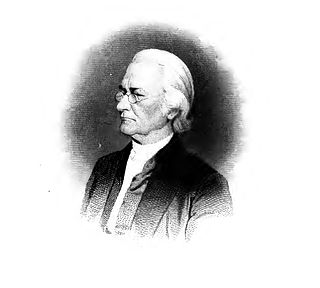
William Meade was an American Episcopal bishop, the third Bishop of Virginia.

Virginia Theological Seminary (VTS), formally called the Protestant Episcopal Theological Seminary in Virginia, located at 3737 Seminary Road in Alexandria, Virginia is the largest and second oldest accredited Episcopal seminary in the United States.
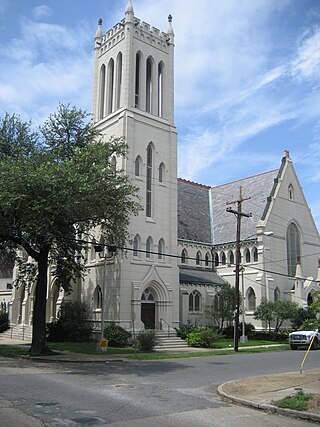
The Episcopal Diocese of Louisiana is the diocese of the Episcopal Church in the eastern part of the state of Louisiana. The see city is New Orleans.

The Episcopal Diocese of Tennessee is the diocese of the Episcopal Church in the United States of America that covers roughly Middle Tennessee. A single diocese spanned the entire state until 1982, when the Episcopal Diocese of West Tennessee was created; the Diocese of Tennessee was again split in 1985 when the Episcopal Diocese of East Tennessee was formed. It is headquartered in Nashville, Tennessee.

Stephen Elliott was the 37th bishop of the Protestant Episcopal Church in the United States of America. He was the first Bishop of Georgia and Provisional Bishop of Florida. He was also the first and only Presiding Bishop of the Protestant Episcopal Church in the Confederate States of America.

The Episcopal Diocese of Georgia, USA is one of 20 dioceses that comprise Province IV of the US Episcopal Church, and is a diocese within the worldwide Anglican Communion. The current bishop is Frank S. Logue, who succeeded Scott Anson Benhase on May 30, 2020, when he was consecrated 11th bishop of Georgia at a service held in Christ Church in Savannah, Georgia.
In the United States, the history of the Episcopal Church has its origins in the Church of England, a church which stresses its continuity with the ancient Western church and claims to maintain apostolic succession. Its close links to the Crown led to its reorganization on an independent basis in the 1780s. In the nineteenth and early twentieth centuries, it was characterized sociologically by a disproportionately large number of high status Americans as well as English immigrants; for example, more than a quarter of all presidents of the United States have been Episcopalians. Although it was not among the leading participants of the abolitionist movement in the early 19th century, by the early 20th century its social engagement had increased to the point that it was an important participant in the Social Gospel movement, though it never provided much support for the Prohibitionist movement. Like other mainline churches in the United States, its membership decreased from the 1960s. This was also a period in which the church took a more open attitude on the role of women and toward homosexuality, while engaging in liturgical revision parallel to that of the Roman Catholic Church in the post Vatican II era.
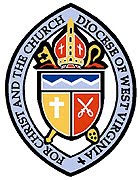
The Episcopal Diocese of West Virginia is a diocese of the Episcopal Church in the United States of America (TEC). It encompasses all 55 counties of West Virginia. The diocese has 66 congregations, including 38 parishes, 26 missions, and 2 other churches. The diocese is headquartered in Charleston and led by The Rt. Rev. Matthew Davis Cowden who was consecrated as bishop coadjutor in March, 2022 and became bishop diocesan in October, 2022.

The Diocese of the South is a diocese of the Orthodox Church in America (OCA). Its territory includes parishes, monasteries, and missions located in fourteen states in the Southern and Southwestern United States – Alabama, Arkansas, Florida, Georgia, Kentucky, Louisiana, Mississippi, New Mexico, North Carolina, Oklahoma, South Carolina, Tennessee, Texas, and Virginia.

John Johns was the fourth Episcopal bishop of Virginia. He led his diocese into secession during the American Civil War and later tried to heal it through the Reconstruction Era. Johns also served as President of the College of William and Mary in Williamsburg before that war, and led and taught at the Virginia Theological Seminary in Alexandria after the war.
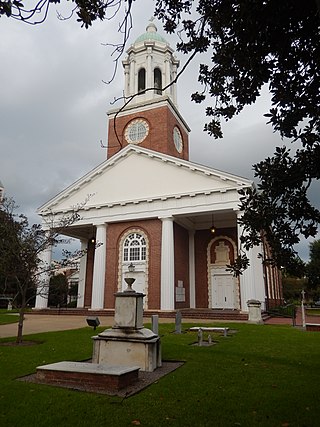
Saint Paul's Church is a historic Episcopal church in downtown Augusta, Georgia, adjacent to Riverwalk Augusta. A member of the Episcopal Diocese of Georgia, Saint Paul's conducts its worship services using the 1979 Book of Common Prayer. The church, located on the corner of 6th and Reynolds Streets, is the oldest church congregation in Augusta. It was established in 1750 by the Church of England at the site of Fort Augusta. There have been five churches on the site. The current church building, which combines features of Federal architecture with those of the Georgian and Greek Revival styles, was designed by Henry Ten Eyck Wendell and dedicated in 1920. It can seat up to 600 people.
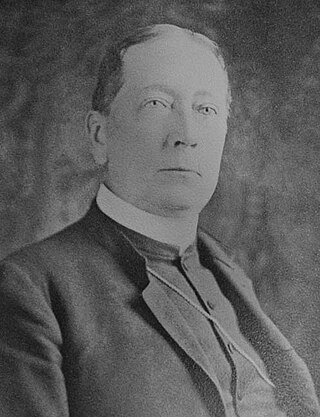
Cleland Kinloch Nelson was the Third Bishop of the U.S. state of Georgia and the first bishop of the Episcopal Diocese of Atlanta. Nelson was the 160th bishop of the Episcopal Church in the United States of America (ECUSA).

The Episcopal Church (TEC), based in the United States with additional dioceses elsewhere, is a member church of the worldwide Anglican Communion. It is a mainline Protestant denomination and is divided into nine provinces. The presiding bishop of the Episcopal Church is Michael Bruce Curry, the first African American bishop to serve in that position.

The Diocese of Quincy was a diocese of the Episcopal Church in western Illinois from 1877 to 2013. The cathedral seat was originally in Quincy, Illinois but was moved to St. Paul's Cathedral in Peoria in 1963. In order to avoid confusion with the Roman Catholic Diocese of Peoria, the diocese retained the name of the location of its original "home" city, Quincy, where its cathedral seat was St. John's.
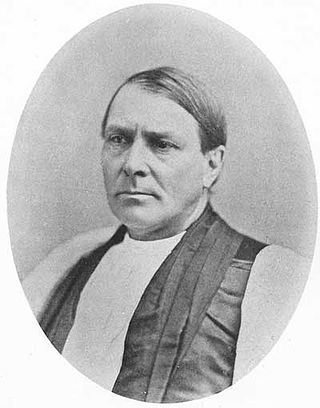
Henry Champlin Lay was a bishop of the Episcopal Church in the United States of America.

Richard Hooker Wilmer was the second Bishop of Alabama in the Episcopal Church. Richard Wilmer was the only bishop to be consecrated by the Episcopal Church in the Confederate States of America (PECCSA).

Joseph Pere Bell Wilmer was the second Episcopal bishop of Louisiana.
The Episcopal Diocese of South Carolina was established in 1785 as one of the nine original dioceses of the Episcopal Church in the United States. The diocese originally covered the entire state of South Carolina, but the western part of the state became the Episcopal Diocese of Upper South Carolina in 1922. In 2012, a controversy led to the existence of two rival dioceses, the Anglican Diocese of South Carolina and the Episcopal Diocese of South Carolina, each claiming to be the legitimate successor of the original diocese.

















